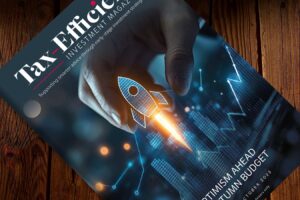Written by Raphael Olszyna-Marzys, international economist at J. Safra Sarasin Sustainable Asset Management
The US economy began the second quarter with unexpected strength, driven by improved sentiment, lower April inflation, and a rebound in equity markets. A key boost came from the US-China trade-war truce that reduced tariffs and eased fears of recession. Firms and consumers also front-loaded purchases to avoid future duties. However, signs of strain are emerging. Input costs are rising, retailer margins fell last month, and financial conditions are tightening. Lending standards have also become stricter. Though recent data have been encouraging, the effects of elevated tariffs and ongoing policy uncertainty are likely to weigh more heavily in the coming months.
Underlying economic growth remains strong
The US economy began the second quarter with unexpected strength. According to the Atlanta Fed’s GDPNow model, output is expanding at an annualised pace of 2.5%. Business and consumer sentiment surveys appear to have stabilised, if not improved slightly. Citi’s economic surprise index has turned positive after spending most of the past three months in negative territory. Inflation also dipped in April, confounding expectations. All this is notable given the recent barrage of tariffs, policy reversals, deals and persistent uncertainty facing firms and households alike.
A key factor for this resilience is the agreement struck in Geneva earlier this month between the US and China, which resulted in a sharp reduction in bilateral tariffs. This has eased fears of ‘empty shelves’, and recession in the US. It has also signalled that the administration recognises the economic damage a rapid decoupling from China could inflict. Businesses, as a result, have been granted some visibility. Investors, rightly or wrongly, appear to expect that the 90-day suspensions of so-called ‘reciprocal’ tariffs, due to expire this summer – on July 9 for most countries and August 14 for China –, will be extended. The US effective tariff rate, therefore, is expected to hover near its current level of ~14%, rather than climb again. The rebound in equity markets has further supported consumer sentiment.
Another reason for the recent strength lies in behaviour driven by tariffs themselves. Firms have front-loaded orders to get ahead of expected duties, and households have brought forward purchases of durable goods, such as cars. Meanwhile, a weaker dollar offers a modest lift to exporters, and lower energy prices are bolstering real incomes and consumption.
Tariffs largely absorbed in margins
None of this suggests that tariffs and uncertainty are harmless. Soft indicators, such as the ISM and regional Federal Reserve manufacturing surveys, point to rising input costs. Producer prices – which measure prices producers get for their products – fell by 0.5% month-on-month in April, but this was largely due to a sharp decline in service margins, particularly a 1.6% decline in trade services. Margins in machinery and vehicle wholesaling sank by 6.1%, echoing anecdotal reports of auto dealers selling pre-tariff stock at pre-tariff prices. This can only continue until old inventories are depleted. When they are, the impact of tariffs is likely to show up more clearly in consumer prices. Indeed, real-time trackers such as Truflation indicate that inflation rose by 75 basis points in May alone.
Policy uncertainty is tightening financial conditions
Elevated policy uncertainty has also, as expected, started to impact financial conditions. The term premium on 10-year Treasury bonds, as measured by the New York Fed, has climbed by 60bps since April to a 10-year high. And the Fed’s latest Senior Loan Officer Survey reveals that lending conditions to enterprises have tightened over the past three months. This implies a renewed contraction in the credit impulse, typically a harbinger of weaker investment and durable goods spending.
In short, although recent data suggest a surprisingly robust economy, the reprieve may prove short-lived. Elevated tariffs and policy uncertainty are likely to exert a more visible drag on activity in the months ahead.









![[UNS] tax](https://ifamagazine.com/wp-content/uploads/wordpress-popular-posts/788955-featured-300x200.webp)
![[uns] house of commons, parliament](https://ifamagazine.com/wp-content/uploads/wordpress-popular-posts/788873-featured-300x200.webp)




